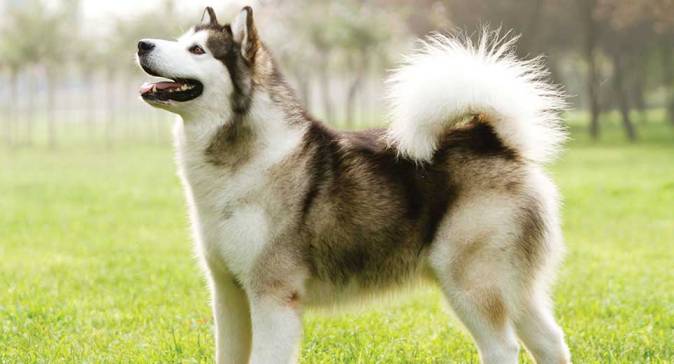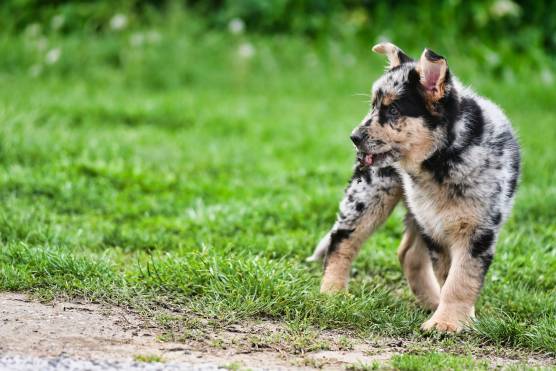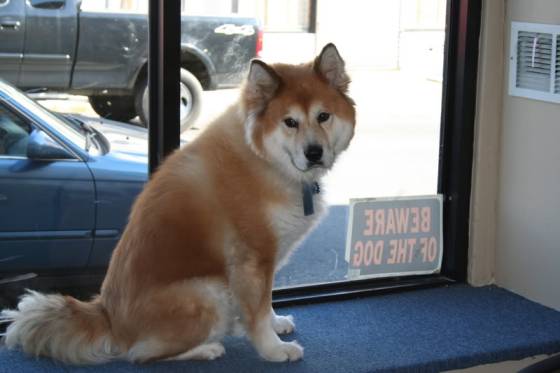Have you recently adopted a Husky? Are you the new pet parent of a Husky? If so, you have some questions about Huskies such as how much exercise they really need. That’s a good question!
Connect with a verified veterinarian in minutes. Licensed vets are available 24/7 to answer your questions. No need to worry about your furry family member.
We’re glad you’re here! We’ve put together a little information on Husky dogs and how much exercise they really need! Let’s get started.
What is a Husky?
Huskies are very easy to spot when they’re out and about. If you see a dog that has thick fur, a beautifully marked face it’s probably a Husky. These are medium-sized dogs that were bred for working. They belong to the Spitz family of dogs.
The most well-known Husky type is the Siberian Husky. They originally were bred by the Chukchi people, who were hunter-gatherers in northern Siberia, Russia. These dogs could survive the extreme cold of Siberia, with their thick, double fur coats. Some Huskies were taken to Nome, Alaska during the Gold Rush, where they were used as sled dogs.
When it comes to characteristics, these dogs love to run. In fact, they make wonderful jogging companions! They weigh between 35-60 lbs and stand between 18-24 inches.
Huskies come in various colors including:
- White
- Agouti
- Black
- Piebald
- Black & tan
- Splash
- Black & white
- Silver
- Red
- Copper
- Brown
- Sable
- Grey
The average life span of a Husky is between 12-15 years. And these dogs are very social. They’ll even make friends with total strangers! They also have high prey instincts for smaller animals such as birds, squirrels, and even cats (though not all hate cats — some will live companionably with them).
In addition, Huskies are very energetic, independent, athletic, and smart. And while they can very friendly, they’re not easily trained.
Huskies have an amazing variety of eye colors. They may have honey-colored eyes, light or dark blue eyes, brown eyes, or even two eyes that are different colors. It’s amazing and each dog is beautifully unique.
Because they have long, double coats, Huskies require regular grooming. One more point is that these beautiful dogs also shed quite a bit. So, expect to be vacuuming your home on a regular basis! To help keep shedding somewhat, brushing your dog on a regular basis is advised. You may want to consider brushing your fur baby outside, rather than in the house.
Huskies do better with people who can give them plenty of attention. This is because they are friendly and social; for this reason, they need plenty of interaction with their pet parents and families. Huskies don’t do well when left home for long periods. This can lead to separation anxiety and destructive behaviors.
Another issue is that you should invest in a very strong fence, which should be 6ft tall. This is because Huskies can easily jump over a fence that’s lower.
When it comes to training, you may also want to invest in daily obedience training classes. Consistent training has been shown to be effective when combined with positive reinforcement methods.
There are some of the basic facts about Huskies! You have probably picked up on the fact that these dogs are extremely energetic working dogs! Guess what that means!
How Much Exercise Does a Husky Need?
You’ve probably already figured out that Huskies require plenty of exercise. They were bred to be working dogs that pulled sleds. In fact, they’re some of the lightest dogs that were used for this type of work!
So, Huskies will require at least one hour of exercise each and every day to burn off energy. If they don’t receive at least one hour of exercise, these dogs will let their energy out in other ways. Huskies who don’t get enough exercise can become destructive. When we say destructive, we mean it. Think of all the energy a Husky can use to pull a sled. Then this amount of energy released into your home. Your home could look like a tornado’s gone through it! Huskies with pent-up energy also are great at jumping over fences, digging out under them, and trying to escape.
Because Husky dogs are so intelligent, they need regular mental stimulation, as much as exercise. They can also be strong-willed, which means they need regular training and a pet parent who has a firm, but kind, and patient hand.

Review symptoms, medications & behavior to keep your pets healthy with a Vet Online in just minutes.
Ask a Vet Live NowTypes of Exercise That’s Best for Your Husky
Your dog will love it if you can provide these types of exercises:
- Mental stimulation
- Purposeful high-intensity activities
- Daily Walk
Walking Your Husky
This is a daily must for your Husky. Daily walks will release your canine companion’s energy and also help to stimulate his mind.
Keep in mind your Husky has the stamina to walk all day long! However, you can walk him about 30 minutes in the early morning (in the warmer months), and then 30 minutes in the late afternoon or evening (when temperatures cool down in summer). Plus, your baby prefers to be on a routine, so it’s a great idea if you can walk him at about the same time(s) each day.
Another option, if your dog comes back when called, is to take him to the dog park. Here, he can be off-leash and run to his heart’s content. If that’s not possible, you might consider a retractable leash, so he has a little more freedom than normal.
If you’d like to make the walk more challenging, then you may want to consider purchasing a weighted vest or a dog backpack. Never add more than 10% of your dog’s body weight. With a weighted vest, your dog will definitely wear off his energy, while gaining strength at the same time. And this method doesn’t cause your dog to overwork.
Other ways to get him to use up more energy are walking uphill and walking in the sand. These provide great resistance and make your dog work harder.
Alternative Exercise Methods for Huskies
There are also other activities that can help your canine companion work off pent up energy! These include games, agility courses, and more.
Fetch
This is a fun game that most dogs enjoy! Playing fetch with your dog will have a great time working off energy! This is a game you can both enjoy. Just purchase a frisbee, take it with you and your dog to the park, and go at it!
If your dog’s not interested in a frisbee, then you can use balls, his favorite dog toys, and more! Consider the iFetch Interactive Ball Launcher for Dogs. This ball launcher throws tennis balls for your dog to chase down. Your dog will wear off energy while being mentally stimulated at the same time. Plus, you won’t wear your arm out by throwing a ball or frisbee several hundred times!
Build an Agility Course in the Backyard
This can also be quite a bit of fun for you and your dog. To build an agility course, check out some videos online to get an idea of what the course can include.
If you’re into DIY, then consider investing in a pre-made agility course for your dog. Here’s one to check out—PawHut 5 Piece Outdoor Game Dog Agility Training Equipment Set. This agility set includes 5 pieces of equipment. It’s quick and easy to set up in your backyard or on a field. Everything is made of rugged plastic and it’s easy to tear down and store in its own sports bag.
Jogging & Biking with Your Husky
Because Huskies are known for having plenty of stamina, they make great companions when you bike or jog! They can go for long distances, but make sure your canine companion is in good shape before trying these types of exercises with him.
Weight Pulling
Here’s another way to get your dog to use up all his energy! Weight pulling is great for building muscle, as well as strength. For this activity, you’ll need to have the right type of harness, which is a pulling harness.
The Flygogo Useful Practical Dog Weight Pulling Harness for Dogs is a nylon pet harness for dogs. This is a strong harness that can used to exercise your Husky. Just be sure to get the right size for him. And experts recommend starting out with light weights, and then have your dog drag the weight 10m to 20 m. Then let them rest for about 2-5 minutes and let them start again.
Play with Other Dogs
Another way to help your Husky wear off excess energy is by allowing him to play with other dogs. Your fur baby will wear off his energy, stimulate his mind, and learn how to socialize with other dogs.
Consider Dog Sports
Huskies are great at agility courses. As noted earlier, you can build one in your own backyard. Or you can join a Husky club, where you and your dog can be trained to enter agility competitions and have fun!
Digging Pit
Huskies are notorious diggers, so you may want to consider building a digging pit in your yard. There your dog can dig as much as he wants! He’ll wear off energy at the same time!
To create a sandpit, just buy a kid’s bathing pool, then fill it with sand. Then you can hide toys in the pit, bones, and more. You’ll need to be aware that the sandpit can become very hot in the summer. So, you should wet it down very well if the digging pit becomes very hot.
There you have it! These are all fun ways to help your Husky get the amount of exercise and mental stimulation he needs to be a balanced dog!
Connect with a verified veterinarian in minutes. Licensed vets are available 24/7 to answer your questions. No need to worry about your furry family member.

Julie
Julie is a graduate of the University of North Carolina, Wilmington, where she studied Animal science. Though contrary to the opinion of her parents she was meant to study pharmacy, but she was in love with animals especially cats. Julie currently works in an animal research institute (NGO) in California and loves spending quality time with her little cat. She has the passion for making research about animals, how they survive, their way of life among others and publishes it. Julie is also happily married with two kids.
Review symptoms, medications & behavior to keep your pets healthy with a Vet Online in just minutes.
Ask a Vet Live Now



